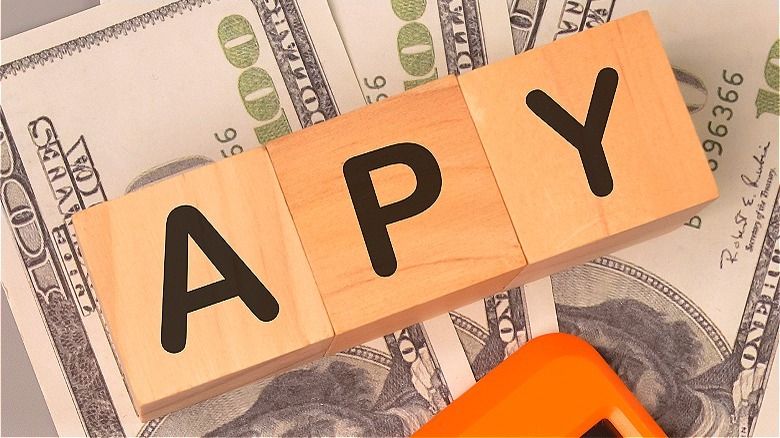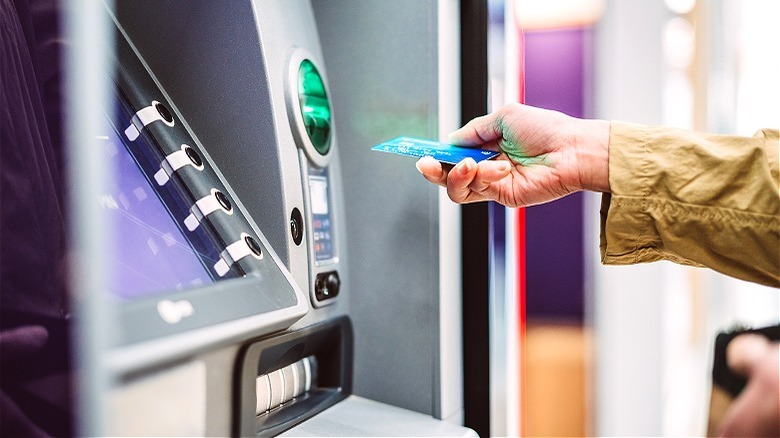You've Been Warned: This Type Of Savings Account Will Only Hurt Your Finances
Between inflation, rising household debt, and ever-increasing housing prices, trying to save money can feel impossible. In fact, according to Bankrate's 2024 Annual Emergency Savings Report, only 28% of Americans reported having enough savings to cover six months' worth of expenses (while 27% reported having no emergency savings whatsoever). As more and more people feel financially strained, it can be important to make sure your current financial institutions are working for you. While saving might feel like a difficult accomplishment, there are ways to ensure whatever you're able to save can grow in a way that will help your overall finances.
The most important thing to keep in mind about keeping money in a savings account is how that money might ultimately be affected by purchasing power. To put it simply, purchasing power is the value of your money. Most often, this is represented by calculating the number of goods or services that you can buy with your unit of money at any given time. With inflation still stubbornly sticking around (with a 12-month rate of 3% in June 2024), your money has a much higher chance of losing value, especially in a traditional savings account. Since most big banks (that is, brick-and-mortar banks like Chase, Wells Fargo, Bank of America) typically offer extremely low annual percentage yield rates (aka the interest you earn on your money as it sits in your account), inflation can easily outpace any APY earnings you might make on your money.
Understanding APY and savings
There are a lot of savings options to consider when dealing with inflation. Most notably, when shopping for a savings account, it's important to look at the account's offered annual percentage yield, or APY. This is the interest rate you'll earn on your money in one year's time while it's in that specific account. Traditional savings accounts don't generally offer a competitive APY. According to the FDIC, the national average savings account rate, as of July 15, 2024, was just 0.45%, meaning that with the current 3% inflation, any money sitting in one of these traditional savings accounts is effectively losing purchasing power. Ultimately, this means any small amount of money you might be able to squirrel away for an emergency fund will end up being worth less than it did when you deposited it, especially if you're aiming to save long term. This is why sticking with a traditional savings account isn't your best financial option.
Instead, researching high-yield savings accounts can be a much smarter financial decision. High-yield savings accounts offer higher APY rates on savings, meaning you can not only help to stave off any loss of purchasing power but also (depending on the APY rate available) potentially earn even more than inflation. By having an APY higher than inflation, you can help your savings grow. Some currently available high-yield savings accounts are offering as much as 5.5% APY. Such a rate can help you hit your savings goals sooner, or even potentially allow you to pay off your debts faster.
Other banking things to consider
While finding a high-yield savings account can be a crucial way to ensure your savings grow, there are certain considerations to keep in mind. For instance, it's important to realize that many high-yield accounts are typically offered by less traditional big banks. This can mean the specific bank you're looking at has certain key differences you might not be used to. For instance, the bank might not have a physical branch location or it could be unable to accept cash deposits. Depending on your specific banking needs, these differences might not matter or they could prove deal-breakers. As always, it's important to do your research and shop around before deciding on a bank, even if the bank's APY seems too good to be true.
It's also important to look into the requirements of a high-yield savings account. Some might charge monthly fees or have required minimum balances that could be higher than what you have at the start of your savings journey. Another important consideration is if the account has any withdrawal limits. As Jennifer White, senior director of banking and payments intelligence at J.D. Power, explained to Fortune, "The goal of savings accounts is to move money less frequently — that is, park the money and allow it to grow." This means savings accounts are more likely to have limitations on how many withdrawals you can make in a month. This means if you're looking to move your money in a more frequent way, it could be harder to find the right account for you.


